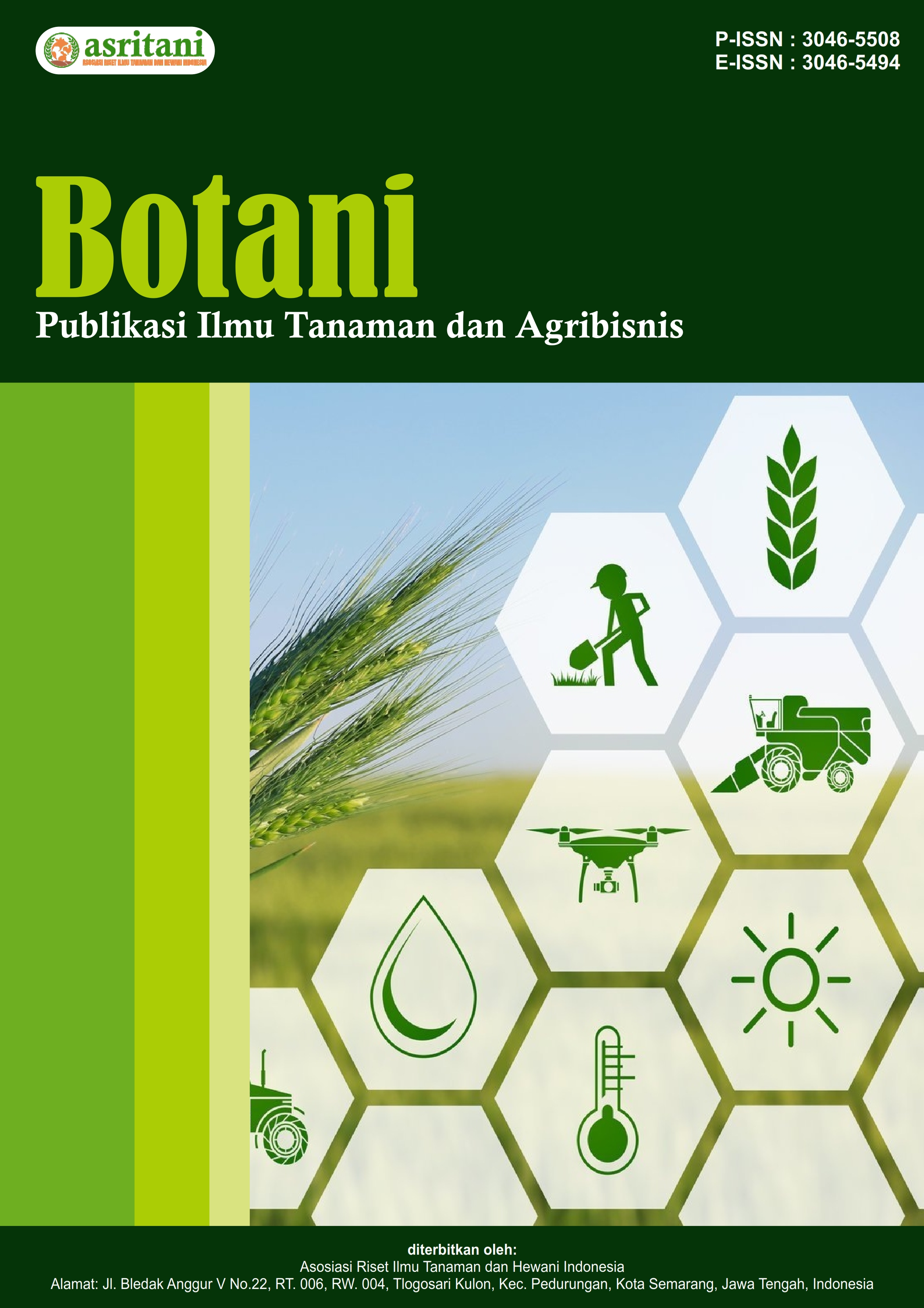Optimalisasi Fungsi Ekologi di Taman Langsat: Strategi Pengendalian Berbasis Lingkungan
DOI:
https://doi.org/10.62951/botani.v2i2.407Keywords:
Ecology, Urban Ecology, Community Engagement, Langsat ParkAbstract
Situated on 3.6 hectares in Kebayoran Baru, South Jakarta, Langsat Park operates as a vital urban lung, sequestering carbon, stabilizing the microclimate, attenuating noise pollution, and enhancing rainwater infiltration. This study aims to develop strategies to optimize the park’s ecological functions through a descriptive qualitative case study approach, encompassing direct observation, semi-structured interviews with park managers and community members, and document analysis using triangulation techniques. The findings reveal a diverse vegetation structure that supports air quality improvement and wildlife habitat, yet persistent challenges such as facility damage, vandalism, and waste accumulation disrupt the ecosystem. Proposed strategies include ecological and recreational zoning, implementation of nature-based solutions, increased community engagement via educational and conservation programs, and the reinforcement of regulations and routine maintenance. The implementation of these strategies is expected to strengthen stakeholder collaboration, sustain the park’s ecological functions as an essential urban green space, and serve as a benchmark for urban park management in the context of rapid urbanization.
References
Arum, D. S., Priyatmoko, R., Hamidah, S., & Insani, N. (2024). Evaluation of Tebet Ecopark management based on ecotourism principles. Jurnal Kepariwisataan Indonesia: Jurnal Penelitian dan Pengembangan Kepariwisataan Indonesia, 18(1), Article 805. https://doi.org/10.47608/jki.v18i12024.1-16
Dahlan, M. Z., Faisal, B., Chaeriyah, S., & Hutriani, I. W. (2023). Review of urban greening policy in Indonesia: A case study in Jakarta Province. International Journal on Livable Space, 6(1), 21–28. https://doi.org/10.25105/livas.v6i1.10678
Dinas Pertamanan dan Hutan Kota Provinsi DKI Jakarta. (2022). Laporan tahunan pengelolaan taman kota. Pemerintah Provinsi DKI Jakarta.
Handayani, E., Besila, Q. A., & Seanders, O. (2024). Improving the ecological impact of Srengseng City Forest in Jakarta: A comprehensive evaluation. Journal of Synergy Landscape, 4(1).
International Union for Conservation of Nature. (2020). Nature-based solutions: Principles and guidelines for implementation. https://www.iucn.org
Kementerian Lingkungan Hidup dan Kehutanan. (2020). Pedoman pengelolaan ruang terbuka hijau di perkotaan. KLHK.
Lin, H., Zhang, X., & Xu, L. (2020). Urban green spaces and their impact on urban microclimate and air quality. Urban Forestry & Urban Greening, 49, 126620.
Oktavia, R. C. D., Maudiarti, S., & Hendradewi, S. (2024). Kosambi Green Lane Park, West Jakarta, Indonesia: Urban recreation and ecology center. European Modern Studies Journal, 8(2), Article 30. https://doi.org/10.59573/emsj.8(2).2024.30/lorojournals.com
Pemerintah Provinsi DKI Jakarta. (2022). Peraturan Daerah Nomor 9 Tahun 2022 tentang RTH dan konservasi kota. Sekretariat Daerah DKI Jakarta.
Putra, A. R., & Nugroho, S. (2022). Community participation in managing urban green spaces: Lessons from Jakarta. Indonesian Journal of Environmental Management, 28(1), 45–57.
Putra, A. R., & Wulandari, R. (2021). Strategi pengelolaan taman kota berbasis ekologis di Jakarta Selatan. Jurnal Lingkungan Perkotaan, 9(2), 115–128.
Putri, N. P., Suryadjaja, R., Santoso, S., & Wipranata, B. I. (2023). Kajian penerapan konsep dan prinsip ekologi taman kota (Studi kasus: Tebet Eco Park, Jakarta Selatan). Jurnal STUPA, 5(2). journal.untar.ac.id
Rahman, T. A., & Dewi, M. N. (2023). Efektivitas ruang terbuka hijau dalam mengurangi dampak urban heat island di kawasan perkotaan. Jurnal Planologi dan Lingkungan, 11(1), 44–59.
Setiawan, E. A., & Seanders, O. (2025, Februari). Healing Park Taman Mataram: Realizing a sustainable Jakarta city through green infrastructure. Journal of Synergy Landscape, 4(2).
Sutapa, I. D. A., Mbarep, D. P. P., Hasibuan, H. S., & Zalewski, M. (2023). Ecohydrology approach to strengthen public green open space management towards comfortable common space and playground in Kalijodo Area – Jakarta Province, Indonesia. Ecohydrology & Hydrobiology, 23(4), 518–531. https://doi.org/10.1016/j.ecohyd.2023.04.005
Tan, K. H., & Wijaya, T. (2024). Remote sensing applications in urban ecological monitoring: Opportunities and challenges. Journal of Spatial Environmental Systems, 36(1), 12–25.
Wardhani, A., & Sari, D. P. (2021). Ecological landscape approach in urban park planning: A case study in Indonesia. Journal of Urban Planning and Development, 147(3), 04021024.
Yuliana, R., & Ardiansyah, M. (2023). Spatial policy for green open space protection in urban areas. Environmental Policy Review, 31(2), 78–91.
Yuslim, S., & Indrawati, E. (2022). Performance evaluation of city parks based on sustainable landscape design in Jakarta. Jurnal Pembangunan Wilayah dan Kota, 18(2). https://doi.org/10.14710/pwk.v18i2.37887
Downloads
Published
How to Cite
Issue
Section
License
Copyright (c) 2025 Botani : Publikasi Ilmu Tanaman dan Agribisnis

This work is licensed under a Creative Commons Attribution-ShareAlike 4.0 International License.





